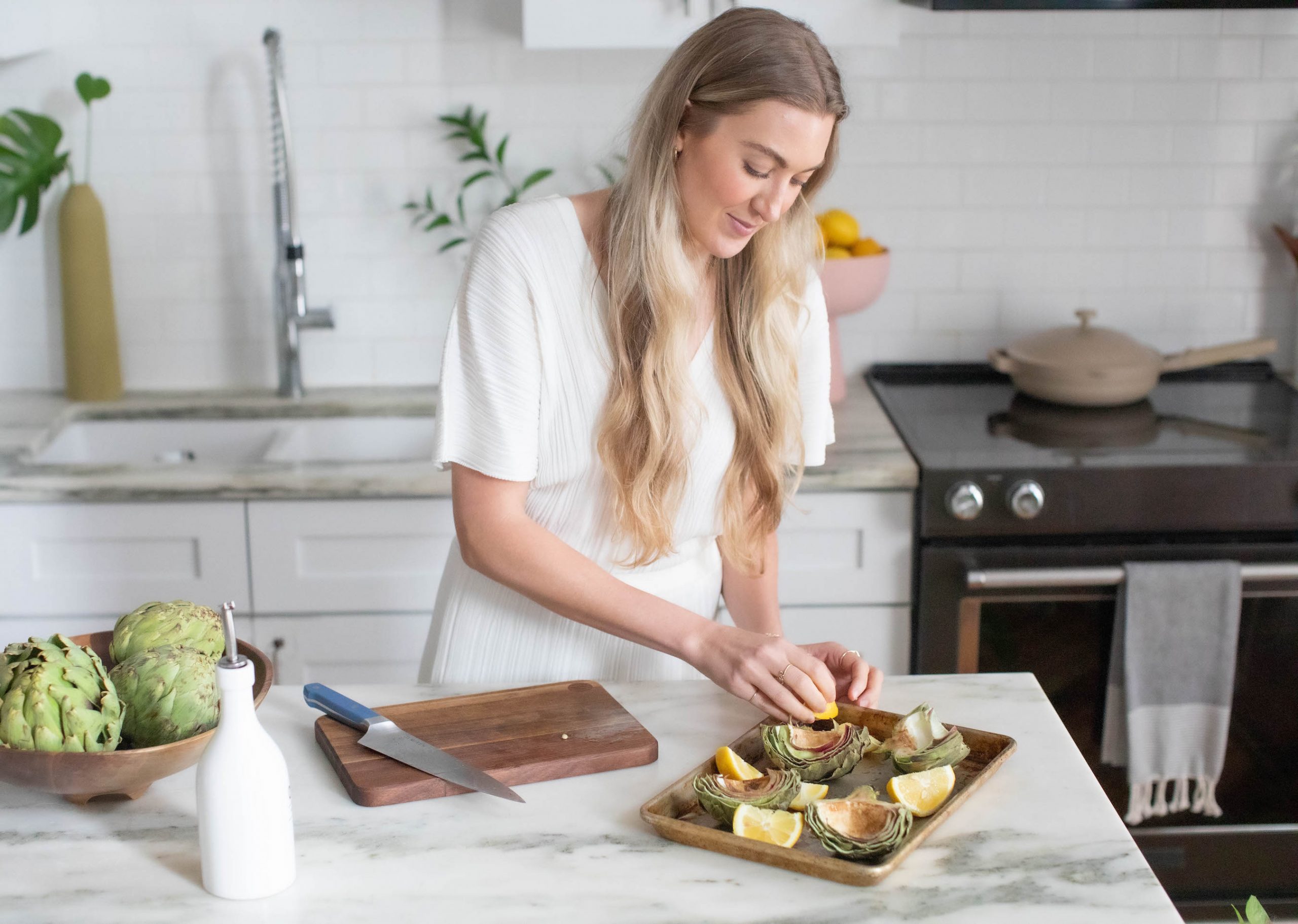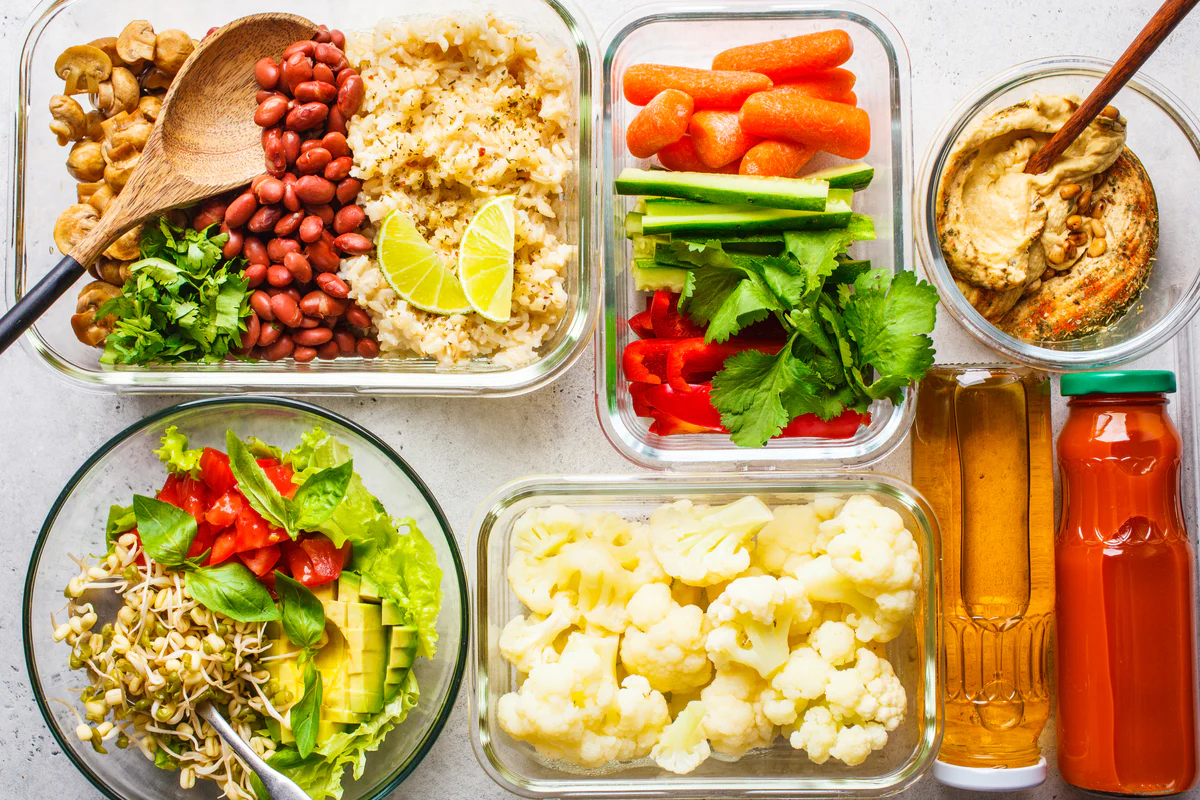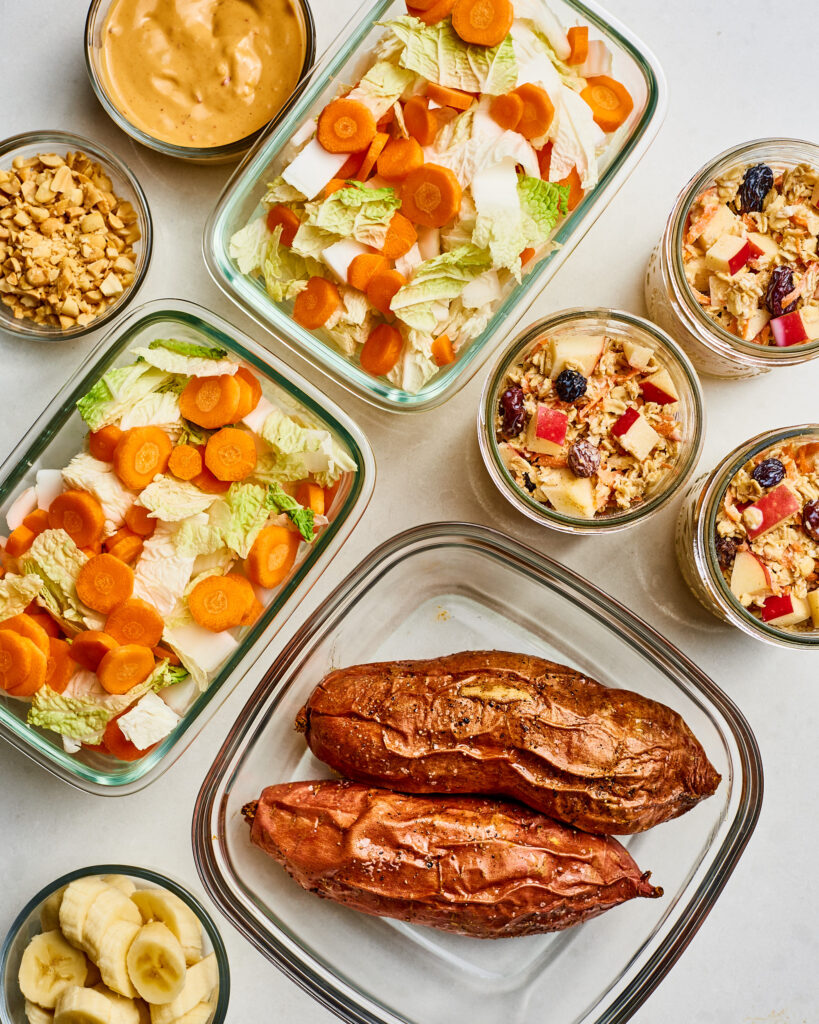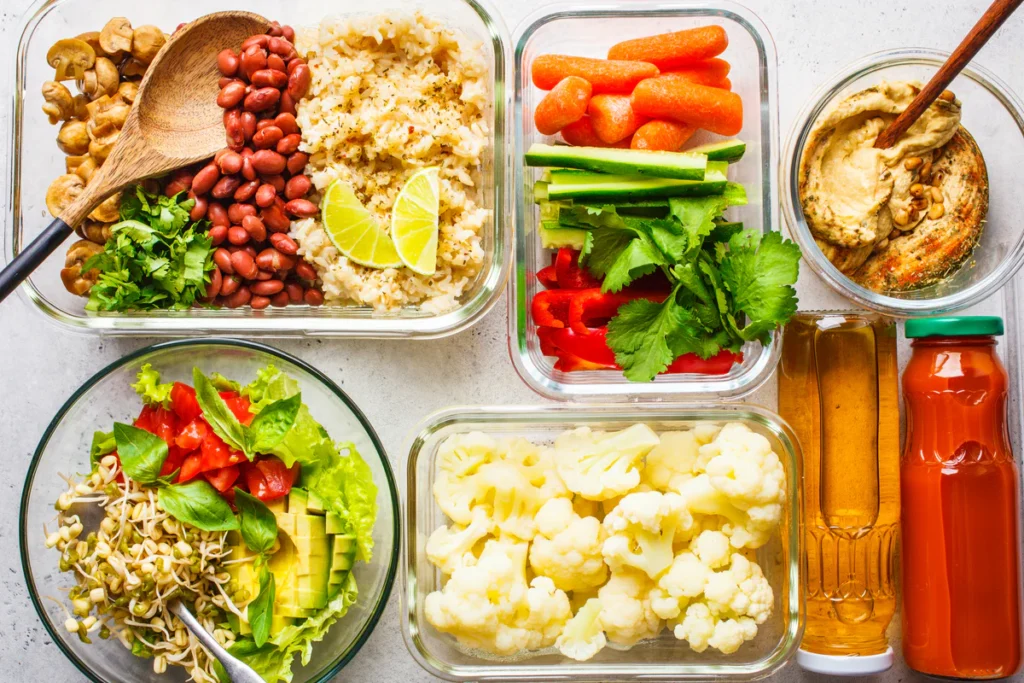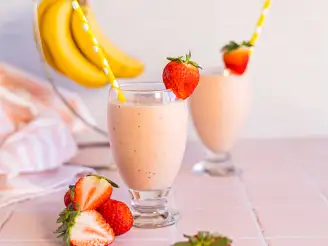Global Flavors: Healthy Recipes Inspired by Cuisines from Around the World, Exploring the flavors of different cuisines can add excitement and variety to your meals while still keeping them healthy. Here are five recipes inspired by global cuisines that are nutritious, delicious, and simple to make at home.

1. Mediterranean Chickpea Salad
Inspired by the fresh and vibrant flavors of the Mediterranean, this chickpea salad is packed with protein, fiber, and healthy fats.
Ingredients:
- 1 can chickpeas, drained and rinsed
- 1 cup cherry tomatoes, halved
- 1 cucumber, diced
- 1/4 red onion, finely chopped
- 1/4 cup Kalamata olives, pitted and sliced
- 1/4 cup feta cheese, crumbled
- 2 tablespoons fresh parsley, chopped
- 3 tablespoons olive oil
- 2 tablespoons lemon juice
- 1 teaspoon dried oregano
- Salt and pepper to taste
Instructions:
- In a large bowl, combine chickpeas, cherry tomatoes, cucumber, red onion, olives, feta cheese, and parsley.
- In a small bowl, whisk together olive oil, lemon juice, oregano, salt, and pepper.
- Pour the dressing over the salad and toss to combine.
- Serve immediately or refrigerate for later.
2. Japanese Miso Soup with Tofu
This comforting and nutritious miso soup is a staple in Japanese cuisine, known for its rich umami flavor and health benefits.
Ingredients:
- 4 cups vegetable broth
- 3 tablespoons miso paste
- 1 cup tofu, cubed
- 1/2 cup green onions, chopped
- 1/2 cup seaweed (wakame), soaked and drained
- 1 cup mushrooms, sliced
Instructions:
- In a large pot, heat vegetable broth over medium heat.
- Add mushrooms and cook until tender.
- Reduce heat to low and dissolve miso paste in a small amount of hot broth in a separate bowl, then add to the pot.
- Stir in tofu, green onions, and seaweed.
- Simmer for 5 minutes, ensuring not to boil the miso.
- Serve hot.
3. Mexican Quinoa Stuffed Peppers
These colorful bell peppers are filled with a protein-packed quinoa mixture, inspired by the bold flavors of Mexican cuisine.
Ingredients:
- 4 bell peppers, tops cut off and seeds removed
- 1 cup quinoa, cooked
- 1 can black beans, drained and rinsed
- 1 cup corn kernels
- 1 cup diced tomatoes
- 1 jalapeño, minced (optional)
- 1 teaspoon cumin
- 1 teaspoon chili powder
- 1/2 teaspoon garlic powder
- 1/2 teaspoon onion powder
- 1 tablespoon olive oil
- Salt and pepper to taste
- Fresh cilantro and lime wedges for serving
Instructions:
- Preheat oven to 375°F (190°C).
- In a large bowl, mix cooked quinoa, black beans, corn, diced tomatoes, jalapeño, cumin, chili powder, garlic powder, onion powder, olive oil, salt, and pepper.
- Stuff each bell pepper with the quinoa mixture and place in a baking dish.
- Cover with foil and bake for 25-30 minutes until the peppers are tender.
- Serve with fresh cilantro and lime wedges.
4. Thai Green Curry with Vegetables
This fragrant and flavorful Thai green curry is loaded with fresh vegetables and a creamy coconut milk sauce, offering a healthy and satisfying meal.
READMORE: Guilt-Free Desserts: Indulgent Yet Healthy Sweet Treats to Satisfy Your Cravings
Ingredients:
- 1 tablespoon coconut oil
- 1 onion, sliced
- 2 garlic cloves, minced
- 1 tablespoon ginger, minced
- 2 tablespoons green curry paste
- 1 can coconut milk
- 1 cup vegetable broth
- 2 cups mixed vegetables (bell peppers, zucchini, carrots, broccoli)
- 1 cup snap peas
- 1 tablespoon soy sauce or tamari
- Fresh basil or cilantro for garnish
- Cooked jasmine rice for serving
Instructions:
- Heat coconut oil in a large pan over medium heat. Add onion, garlic, and ginger, and sauté until fragrant.
- Stir in green curry paste and cook for 1 minute.
- Add coconut milk and vegetable broth, stirring to combine.
- Bring to a simmer and add mixed vegetables and snap peas. Cook until vegetables are tender.
- Stir in soy sauce and adjust seasoning if needed.
- Serve over jasmine rice, garnished with fresh basil or cilantro.
5. Indian Lentil Dal
This hearty and comforting lentil dal is a staple in Indian cuisine, rich in protein and full of aromatic spices.
Ingredients:
- 1 cup red lentils, rinsed
- 4 cups water or vegetable broth
- 1 onion, diced
- 2 garlic cloves, minced
- 1 tablespoon ginger, minced
- 1 can diced tomatoes
- 1 tablespoon curry powder
- 1 teaspoon turmeric
- 1 teaspoon cumin
- 1/2 teaspoon coriander
- 1/2 teaspoon cayenne pepper (optional)
- 1 tablespoon coconut oil
- Fresh cilantro for garnish
- Cooked basmati rice for serving
Instructions:
- Heat coconut oil in a large pot over medium heat. Add onion, garlic, and ginger, and sauté until fragrant.
- Stir in curry powder, turmeric, cumin, coriander, and cayenne pepper. Cook for 1 minute.
- Add lentils, water or broth, and diced tomatoes. Bring to a boil, then reduce heat and simmer for 20-25 minutes until lentils are tender.
- Adjust seasoning as needed.
- Serve over basmati rice, garnished with fresh cilantro.
Final Thoughts
These globally-inspired healthy recipes bring the flavors of the world to your kitchen while keeping your meals nutritious and balanced. Experimenting with different cuisines can make healthy eating more exciting and enjoyable. Bon appétit


